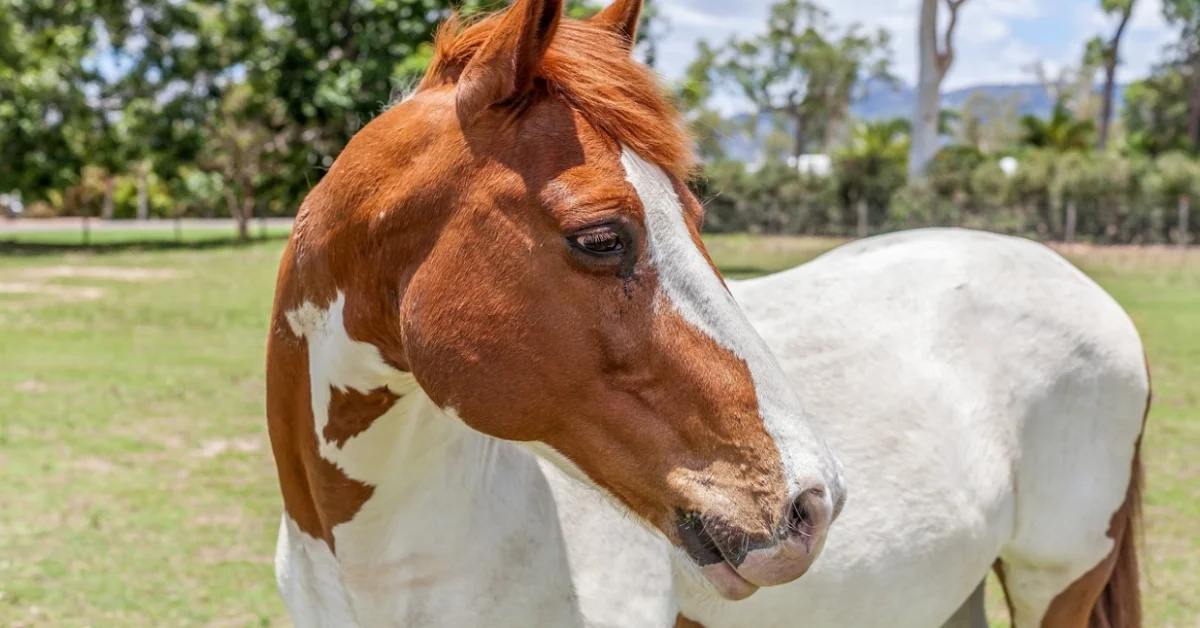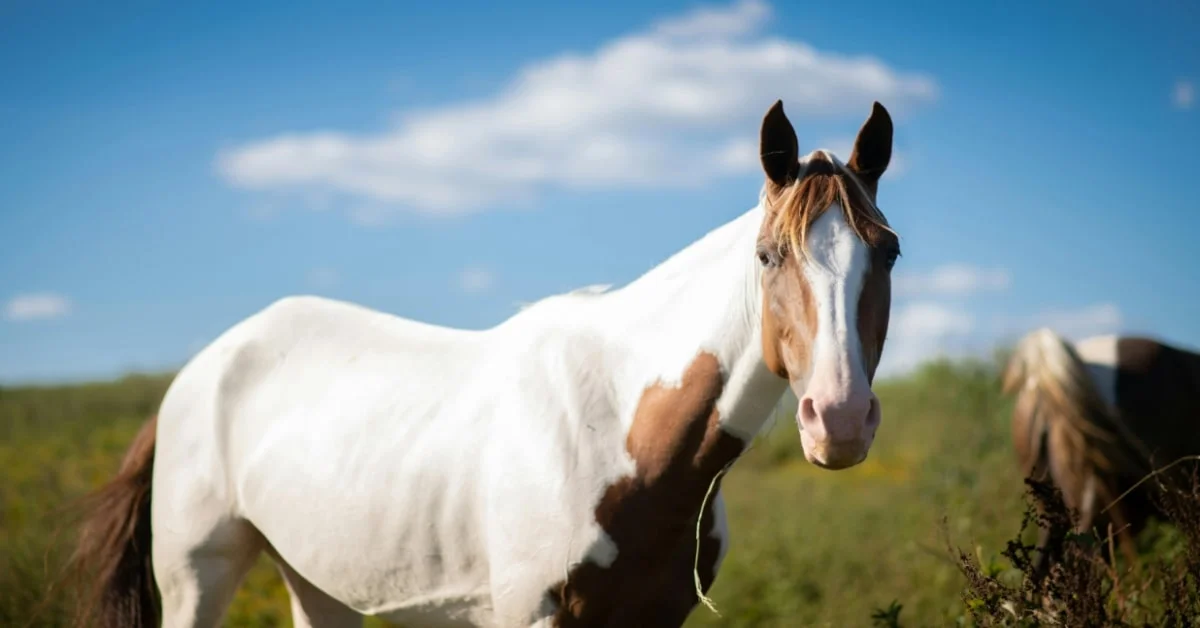Paint Horse
The Paint Horse is a distinct horse breed known for its colorful coat patterns. Developed in North America, this breed combines the…
Life Span
25–30 years
Top speed
55 mph
Size
14–16 hands
Weight
950–1,200 lbs
The Paint Horse is a distinct horse breed known for its colorful coat patterns. Developed in North America, this breed combines the athletic abilities of stock horses with a striking appearance. Paint Horses are intelligent, versatile, and widely used for riding, ranch work, and various equestrian disciplines.
Paint Horse Facts Overview
| Size: | 14–16 hands |
| Weight: | 950–1,200 lbs |
| Top Speed: | 55 mph |
| Food: | Grass, hay, grains |
| Color: | White + black, bay, chestnut |
| Location: | North America |
| Predators: | Wolves, mountain lions |
| Lifespan: | 25–30 years |
| Habitat: | Grasslands, plains |
| Gestation: | 11 months |
Paint Horse Description
Paint Horses stand 14–16 hands tall and weigh between 950 and 1,200 pounds. Their coats feature bold patterns in white combined with other colors like black, bay, and chestnut. Common coat patterns include overo, tobiano, and tovero, making each Paint Horse visually unique and highly recognizable.
Paint Horse Characteristics
Paint Horses are strong, agile, and intelligent. They have a muscular build and are known for their stamina and calm disposition. Their unique coat patterns set them apart, but they share the same agility, speed, and versatility as other stock horse breeds, making them ideal for multiple activities.

Paint Horse Care
Paint Horses require regular grooming, proper nutrition, and exercise. Grooming keeps their coat clean and healthy, while a balanced diet ensures they maintain a healthy weight. Routine veterinary checkups, vaccinations, and farrier visits are essential for preventing health issues and keeping them in top condition.
Paint Horse Lifespan
With proper care, Paint Horses typically live 25 to 30 years. Their longevity depends on diet, exercise, and healthcare. Regular checkups and a healthy environment help prevent illnesses and extend their lifespan. Paint Horses are known for staying active and healthy well into their senior years.
Paint Horse Predators
In the wild, natural predators of horses include wolves and mountain lions. However, Paint Horses are mostly domesticated and face minimal threats from predators. Instead, human-related risks such as accidents, poor care, and diseases are their primary concerns in managed environments.
Paint Horse Habitat
Paint Horses thrive in open grasslands, pastures, and plains. They prefer temperate climates and need ample space to roam and graze. Domestic Paint Horses live on farms or ranches with access to shelter, clean water, and enough pasture for exercise and foraging.

Paint Horse Distribution
Paint Horses are predominantly found in North America, especially the United States and Canada. They are popular worldwide due to their striking appearance and versatility. Paint Horses are often seen in Western riding events, ranch work, and recreational activities across various regions.
Paint Horse Diet
Paint Horses are herbivores, mainly eating grass, hay, and grains. A healthy diet includes forage, supplemented with vitamins and minerals. Fresh water should always be available. Avoid overfeeding grains to prevent health problems like colic and laminitis, which can be life-threatening.
Paint Horse Behavior
Paint Horses are known for their friendly and calm demeanor. They are highly trainable and develop strong bonds with their handlers. They exhibit social behavior and thrive in herds. Their intelligence and willingness to learn make them suitable for various equestrian activities and disciplines.

Paint Horse Reproduction
Paint Horse mares have a gestation period of about 11 months. A healthy mare typically gives birth to a single foal. Foals nurse for several months before transitioning to solid food. Responsible breeding practices help maintain the breed’s health and preserve its unique coat patterns.
Paint Horse Scientific Classification
| Kingdom: | Animalia |
| Phylum: | Chordata |
| Class: | Mammalia |
| Order: | Perissodactyla |
| Family: | Equidae |
| Genus: | Equus |
| Species: | Equus caballus |
| Scientific Name: | Equus caballus |
Animals for You
References
1. Paint Horse Wikipedia Article – https://en.wikipedia.org/wiki/American_Paint_Horse

